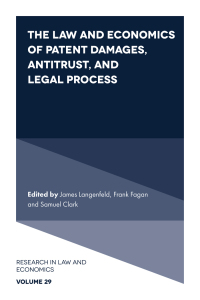Question
Briefly evaluate the ratio trends. Indicate on your worksheet whether each ratio is:(By using the below attachment) stronger / weaker quicker /slower more / less
Briefly evaluate the ratio trends. Indicate on your worksheet whether each ratio is:(By using the below attachment) stronger / weaker quicker /slower more / less liquid more / less risk
DuPont Analysis on Tesla Inc. for 2 years:
Return on Sales:
Return on sales can be calculated as ratio of net income and revenue.
|
| 2020 | 2019 |
| Net income | $690,000 | $-862,000 |
| Total Revenue | $31,536,000 | $24,578,000 |
| Asset Turnover ratio | 0.022 | -0.035 |
Return on sales is stronger in 2020 compared to 2019.
Asset Turnover:
Asset turn over can be calculated as Sales divided by Average Total Assets.
|
| 2020 | 2019 |
| Total Revenue | $31,536,000 | $24,578,000 |
| Average Total Assets | $52,148,000 | $34,309,000 |
| Asset Turnover ratio | 0.605 | 0.716 |
Asset turnover ratio much better in 2019 compared to 2020.
Return on Assets:
Return on assets turn over can be calculated as net income divided by average Total Assets.
|
| 2020 | 2019 |
| Net income | $690,000 | $-862,000 |
| Average Total Assets | $52,148,000 | $34,309,000 |
| Asset Turnover ratio | 0.013 | -0.025 |
Return on assets is stronger in 2020 compared to 2019.
Financial Leverage:
Financial Leverage can be calculated as ratio of average assets and average equity.
|
| 2020 | 2019 |
| Average assets | $52,148,000 | $34,309,000 |
| Average equity | $23,075,000 | $7,467,000 |
| Financial Leverage ratio | 2.26 | 4.6 |
Financial leverage is lower in 2020 when compared to 2019.
Return on Equity:
Return on equity can be calculated by dividing Net income with Shareholders equity.
|
| 2020 | 2019 |
| Net income | $690,000 | $-862,000 |
| Shareholders equity | $22,225,000 | $6,618,000 |
| Return on equity | 0.0311 | -0.13 |
Return on equity is stronger in 2020 compared to 2019.
Debt ratio can be calculated as:
Debt Ratio = (total Liabilities) / (Total Assets)
Debt ratio can be calculated as follows:
|
| 2020 | 2019 |
| Total Liabilities | $30,946 | $29,993 |
| Total Assets | $42,779 | $41,290 |
| Total Debt ratio | 72.34% | 72.64% |
=E12/E13
Gross Profit Margin (%) is given as:
Gross Profit Margin (%) = (Gross Profit) / (sales)
Gross profit margin can be calculated as
|
| 2020 | 2019 |
| Gross Profit | $23,2448 | $22,057 |
| Total sales | $78,112 | $75,356 |
| Gross Profit Margin | 29.76% | 29.27% |
=E24/E25
Free cash flow can be calculated using cash flow statement as
Free Cash flow = cash flow from operations capital expenditure
Cash flow from operations can be calculated using the operating section of cash flow statement and capital expenditure can be calculated using the investing section of the cash flow statement.
| Cash flow from operations | $7,117 | $5,973 |
| Capital expenditure | $2,944 | $3,416 |
| Free cash flow | $4,173 | $2,557 |
=E10-E11
Time interest earned ratio shows the companys ability to pay the debt obligation.
It is calculated as:
Time Interest Earned Ratio = (EBIT) / (Interest Expense)
Time interest earned ratio can be calculated as:
|
| 2020 | 2019 |
| EBIT (Operating Income) | $4,658 | $4,110 |
| Interest Expense | $468 | $434 |
| Time Interest Earned Ratio | 9.95 | 9.47 |
=E50/E51
Accounts Receivable Turnover is given as:
Accounts Receivable Turnover = (Credit sales) / (Average Receivables)
Accounts Receivable Turnover can be calculated as:
|
| 2020 | 2019 | 2018 |
| Credit Sales | $78,112 | $75356 | $0 |
| Receivables | $0 | $0 | $0 |
| Average Receivables | $0 | $0 | $0 |
| Accounts receivable | 0 | 0 |
|
=E66/E68
Since receivables are zero therefore accounts receivable turnover is zero.
Inventory turnover is given by:
Inventory Turnover = (cost of goods sold) / (average inventory)
Inventory turnover is calculated as:
|
| 2020 | 2019 | 2018 |
| Cost of goods sold | $54,886 | $53,299 |
|
| Inventory | $8,992 | $9,497 | $8,597 |
| Average inventory | $9,245 | $9,047 |
|
| Inventory turnover | 5.93 | 5.89 |
|
=E84/E86
Step by Step Solution
There are 3 Steps involved in it
Step: 1

Get Instant Access to Expert-Tailored Solutions
See step-by-step solutions with expert insights and AI powered tools for academic success
Step: 2

Step: 3

Ace Your Homework with AI
Get the answers you need in no time with our AI-driven, step-by-step assistance
Get Started


